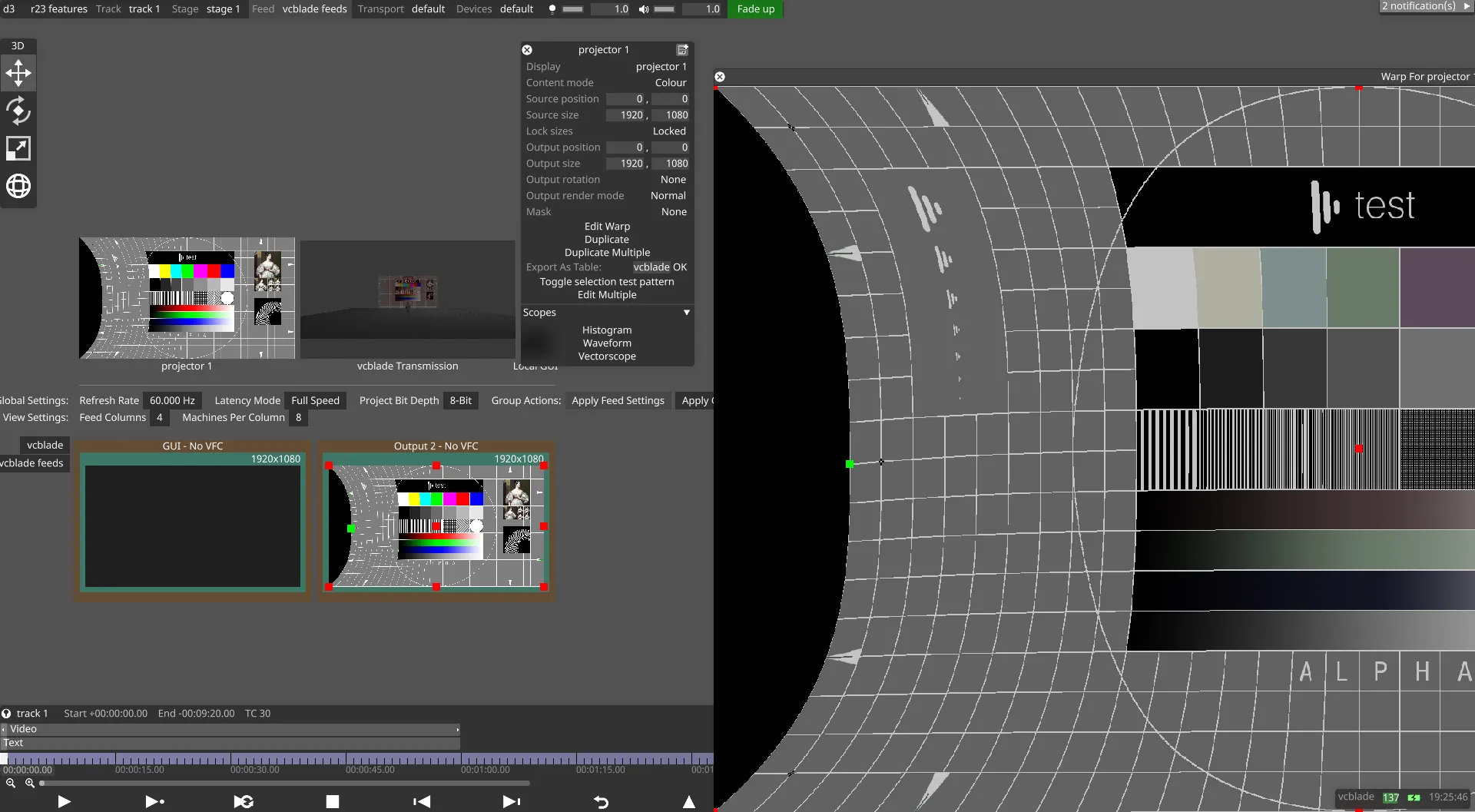Warping Outputs
In cases where the projection surface does not match the virtual 3D model (i.e. where the lineup from the manual or automatic calibration needs a slight fine-tune), Designer provides a number of powerful warping layers that can be applied directly to the output. By using these tools, there is no requirement for projector keystoning or any other warping inside the physical projector.
Adding and Using Warping Layers
Section titled “Adding and Using Warping Layers”To add a warping layer to an output:
- Left-click Feed in the dashboard at the top of the screen.
- Right-click the relevant output.
- Select Edit Warp from the context menu options list.
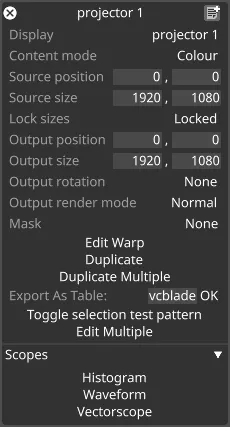
For more information on the dashboard layout and functionality, refer to the Designer User Interface section.
Deformation Layers for Warping an Output Feed
Section titled “Deformation Layers for Warping an Output Feed”In the editing window, left-click the + button under the Deformation layers title.
This will display a list of deformation layers.
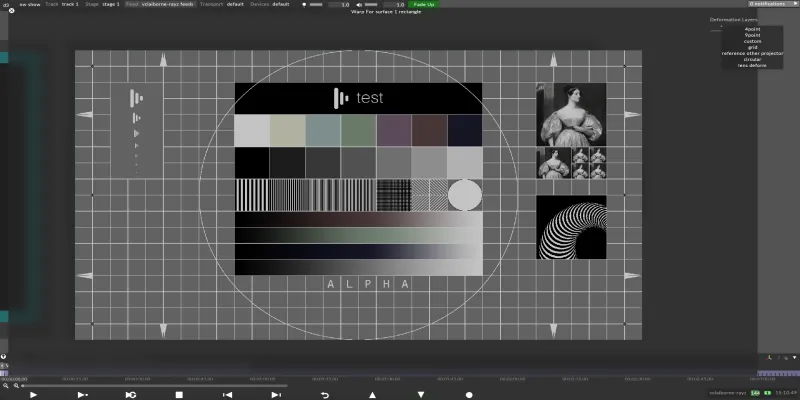 Deformation layers for warping an output feed, opened by left-clicking + under the Deformation Layers title
Deformation layers for warping an output feed, opened by left-clicking + under the Deformation Layers title
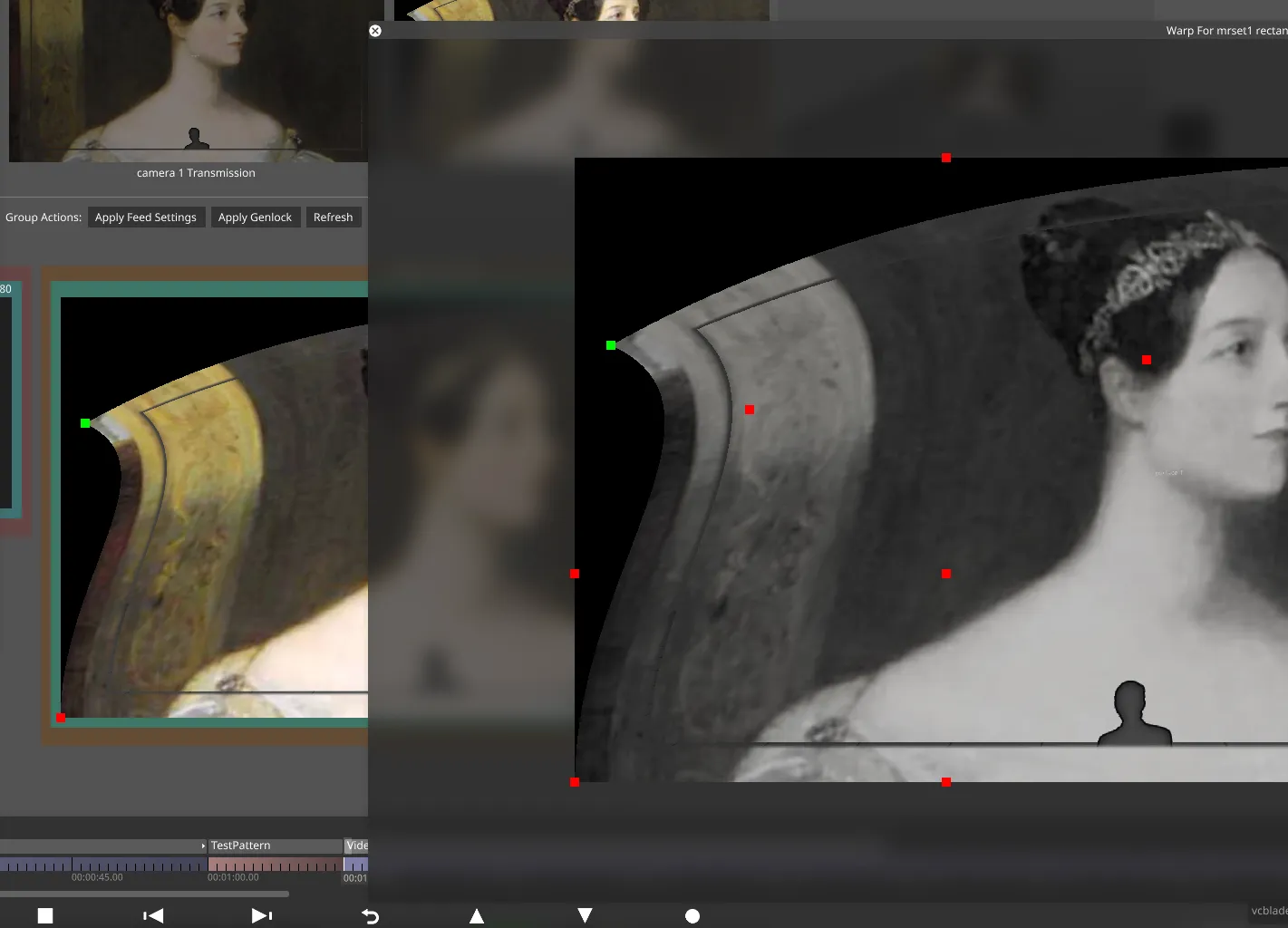 Warp points being added to an output
Warp points being added to an output
Warping Layer Types
Section titled “Warping Layer Types”4point
Section titled “4point”
Drag any of the 4 points inwards to globally adjust the warping of the output. Adjust the horizontal and vertical bias to shift-scale the content.
9point
Section titled “9point”
9point warp allows you to drag 9 points inwards and adjust the pinch and straightness between them. This feed warp is useful when projecting onto a cylindrical screen when not using Projector Simulation. It easily conforms a rectangular output to fit to a cylindrical screen.
Custom
Section titled “Custom”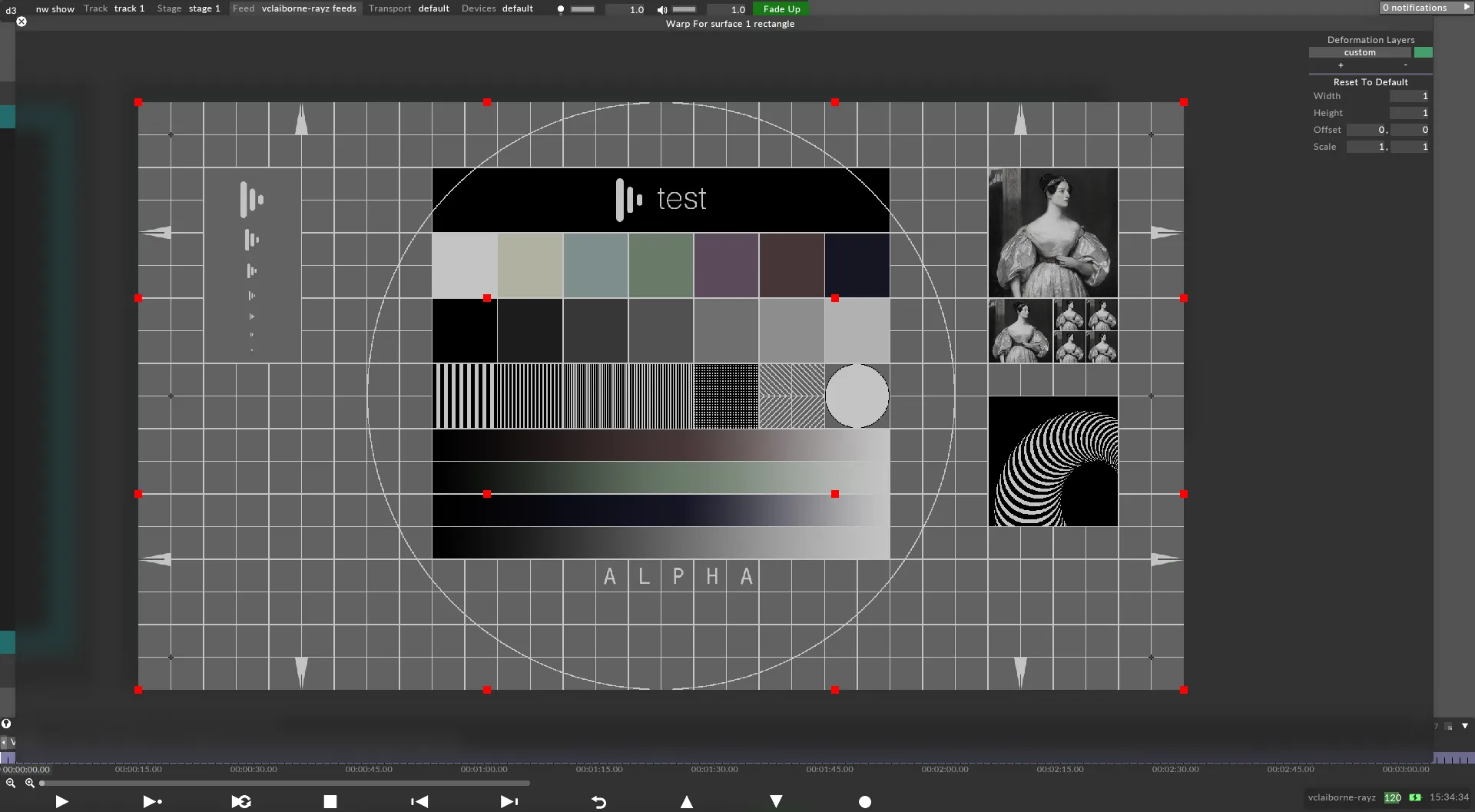
Creates an arbitrary number of grid points on the output that can be individually or group-selected. You can use this when local warping on an object is required.
Provides a regular grid of points for more structured and uniform warping adjustments across the output

Reference other projector
Section titled “Reference other projector”Uses the deformation of another projector as a reference to synchronise output warping across multiple devices.

Circular
Section titled “Circular”Applies circular deformation for radial-based warping needs, useful for dome or spherical projections.
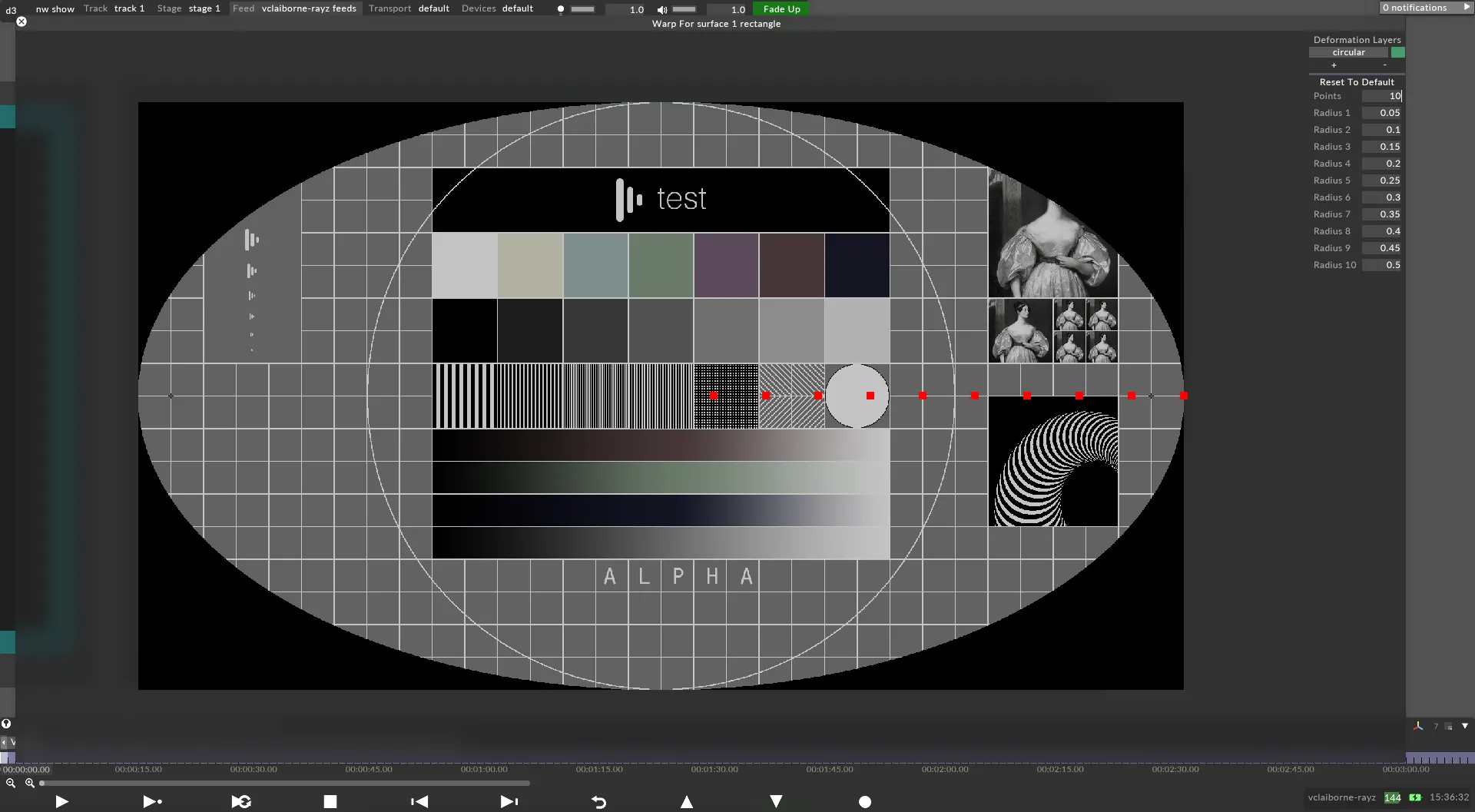
Lens Deform
Section titled “Lens Deform”Simulates lens distortion effects, allowing correction or emulation of barrel or pincushion distortion.
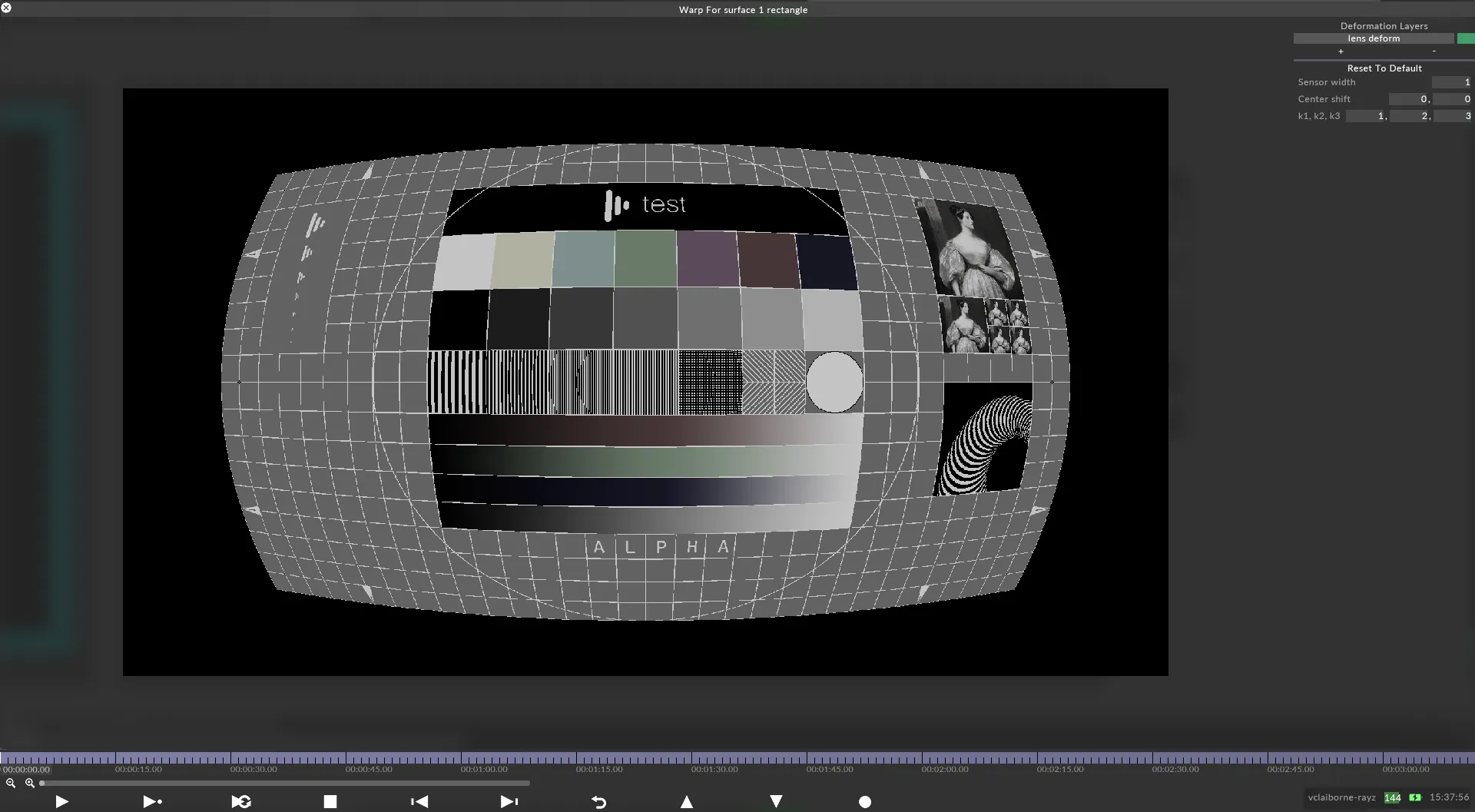
Draw control points on output
Section titled “Draw control points on output”Visually place and adjust control points directly on the output for precise manipulation.
